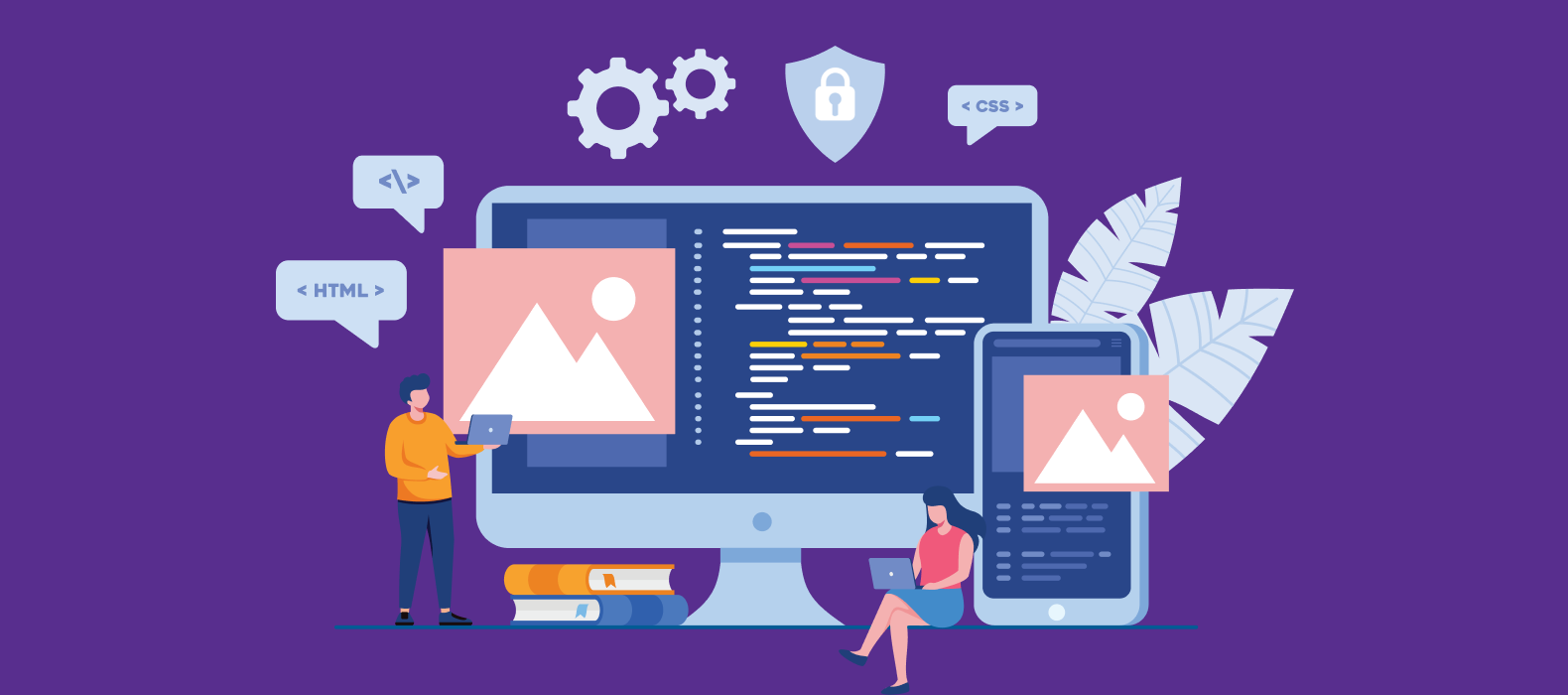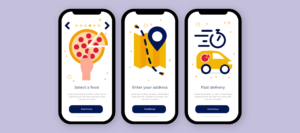Did you know there are almost 2 billion websites across the globe? In an overwhelming sea of competition, how can you ensure your website makes waves?
Building a website isn’t easy. There are many websites with good content, but the design is poor. Also, a site with good design lacks maintenance. Web development involves more than just putting coding on a website; web design is crucial to the development process as well.
Your website is the face of your company. When conducting research, people will visit your website. It has to be unique and perfect. Your website visitors ought to find what they’re seeking for there. Every website needs a good content management system (CMS). You have a variety of platforms to pick from. WordPress is one such CMS that is amazing to use. WordPress is the most famous open-source content management system in the world. Thirty percent of the world’s websites are on WordPress. It is a staggering number.
A web developer uses programming languages such as HTML, CSS, and Javascript to make your web design run and function like you want. In this article, We’re going to discuss the successful stages of website development-
What is the Website Development Life Cycle?

Before diving into the details of website development processes, let’s quickly review what the development life cycle entails and what it often comprises.
The software or website development life cycle is the process or a standard that points you in the direction of creating a high-quality solution. It can be thought of as a list of the steps needed to finish the project.
We know there are different ideas about a typical website-building process. Nonetheless, some standards must follow for every specific website to succeed during its development life cycle.
In this post, we will concentrate on the website development checklist that will assist in producing a high-quality website based on user value.
Stages of Website Development with Web Development Examples

Website development involves a series of stages that must carefully follow to ensure a high-quality website creation. Here are ten important stages of website development with web development examples:
1. Planning and Research:
Planning and research are crucial stages of website development that help to define the goals, target audience, and functionality of the site. In this stage, the development team works closely with the client to understand their needs and requirements and develop a detailed website plan.
Here are some key steps in the planning and research stages of website development, along with some examples of how they might be applied:
- Define the website’s purpose: This step involves identifying the website’s goals and how it will be used. For example, a business might want to create a website to sell products online, while a nonprofit might want to create a website to raise awareness of its cause.
- Identify the target audience: Knowing the target audience helps to determine the website’s design, layout, and content. For example, if the website targets older people, the design might need to be simple and easy to navigate.
- Conduct market research: This step involves researching the competition and understanding the trends in the industry. For example, if the website is for an e-commerce store, research might involve analyzing similar stores’ pricing strategies and customer reviews.
- Develop a content strategy: This involves planning the content included on the website, such as text, images, and videos. For example, a blog might require regular updates with informative articles, while an e-commerce site might require detailed product descriptions.
- Create a site map: This involves creating a hierarchical structure for the website, which helps to organize the content and navigation. For example, a site map for an e-commerce site might include categories such as “electronics,” “clothing,” and “home goods.”
- Develop wireframes and prototypes: This involves creating a visual representation of the website layout and functionality. For example, a wireframe might show the layout of a product page on an e-commerce site, including the placement of product images, descriptions, and reviews.
Overall, the planning and research stage is critical for the success of website development, as it helps to define the goals, target audience, and functionality of the site. By planning and researching these aspects of the website carefully, the development team can create a site that meets the client’s needs and the audience’s expectations.
2. User Experience Design:
User Experience (UX) Design is crucial stages of website development that focuses on creating a positive and enjoyable experience for website users. This stage involves designing the website’s interface, interactions, and navigation to make it easy for users to achieve their goals and objectives.
Here are some examples of UX Design considerations in website development:
- User Research: Before beginning the UX Design process, it’s important to understand the target audience’s needs and preferences. This can be achieved through user research methods such as surveys, focus groups, and user testing. For example, a healthcare website may conduct user research to determine patients’ primary concerns and information needs.
- Information Architecture: A well-organized information architecture makes it easy for users to find the necessary information. This involves structuring the website’s content logically and intuitively. For example, a news website may use categories and tags to help users navigate and discover articles.
- Wireframing: Wireframing visually represents the website’s layout and content. It allows UX designers to test and refine different design solutions before moving on to the visual design stage. For example, a travel booking website may create wireframes to explore different search and booking form layouts.
- Visual Design: The visual design stage involves creating the website’s look and feel. This includes choosing colors, typography, images, and other visual elements. For example, an e-commerce website may use bright colors and high-quality product images to create a visually appealing and engaging user experience.
- Prototyping: A prototype is an interactive version of the website that allows UX designers to test and refine the user experience. For example, a social media website may prototype different user flows for posting and sharing content.
- Usability Testing: Usability testing involves observing users interact with the website and collecting feedback on their experience. This helps UX designers identify and fix any usability issues. For example, an educational website may conduct usability testing to ensure that its online courses are easy to navigate and complete.
In conclusion, the User Experience Design is an essential stages of website development that focuses on creating a positive and enjoyable experience for website users. By considering the user’s needs and preferences, organizing the website’s content logically and intuitively, and testing and refining the user experience through wireframing, prototyping, and usability testing, UX designers can create websites that are easy to use and achieve their intended goals.
3. Visual Design:
The visual design stages of website development is the phase where the look and feel of the website are determined. The objective is to create a visually appealing, user-friendly, and effective design that meets the client’s requirements.
Some examples of visual design in website development include:
- Layout: The layout of a website determines how the content is organized and presented. For example, a news website may have a layout optimized for displaying headlines and articles in a grid format. In contrast, an e-commerce website may have a layout emphasizing product images and descriptions.
- Typography: Typography refers to the choice of fonts and typefaces used on a website. Designers may choose a font that reflects the brand’s personality or is easy to read. For example, a modern tech company might use a sans-serif font, while a traditional law firm may use a serif font.
- Color scheme: The color scheme of a website can evoke emotions and help communicate the brand’s message. For example, a health and wellness website may use calming colors like blue and green, while a sports website may use energetic colors like red and orange.
- Visual elements: Visual elements such as images, icons, and graphics enhance the website’s design and communicate its message. For example, a travel website may use images of exotic locations, while a cooking website may use images of food and ingredients.
Overall, the visual design stages of website development plays a crucial role in creating a functional and visually appealing website. By creating a design that is visually engaging, easy to navigate, and aligned with the brand’s message, designers can help ensure that users have a positive experience on the website.
4. Content Development:
Content Development is a crucial stage in website development that involves creating, gathering, and organizing content. In this stage, the website’s content is developed based on the website’s purpose, goals, and audience.
Here are some examples of Content Development in web development:
- Content Strategy: Developing a content strategy involves identifying the target audience, creating a message that resonates with them, and determining the right type of content that will use to convey that message. This includes creating a content plan, deciding on the tone and voice of the website, and creating a content calendar.
- Copywriting: Copywriting involves creating written content for the website, including headlines, subheadings, and body copy. Copywriting is critical in web development because it helps the website to communicate its message effectively to its target audience. A good copywriter will know how to write persuasive and engaging copy that will entice users to take action.
- Visual Content: Visual content includes images, videos, and other multimedia elements that help to convey the website’s message. Visual content is essential to website development because it helps break up the text and make it more visually appealing. This includes selecting and creating the appropriate visual content, such as images and videos, and optimizing them for the web.
- Information Architecture: Information architecture involves organizing the website’s content to make it easy for users to find what they want. This includes creating a site map, defining the website’s navigation, and organizing the content into categories and subcategories. A good information architecture will make it easy for users to navigate the website and quickly find the information they need.
- Search Engine Optimization (SEO): Search engine optimization involves optimizing the website’s content for search engines to rank higher in search results. This includes identifying relevant keywords, creating quality content that incorporates those keywords, and optimizing the website’s metadata and other technical elements.
Overall, content development is an important stages of website development because it helps create a website that communicates effectively with its target audience and helps achieve its goals.
5. Front-End Development:
Front-end development refers to creating the user-facing portion of a website or web application. This includes designing the layout, creating the visual elements, and implementing the interactive features that users interact with on a website.
Some common examples of front-end development tasks include:
- Creating the layout and visual design of the website: This involves creating a visual design for the website, including colors, fonts, and other design elements used throughout the site.
Example: A front-end developer might use a tool like Adobe XD or Figma to create the visual design of a website, including the layout of different sections and the overall color scheme.
- Building the website structure involves creating the HTML and CSS code that defines the website’s structure and appearance.
Example: A front-end developer might use a code editor like Visual Studio Code or Atom to create the HTML and CSS files for a website, including the header, navigation, and other structural elements.
- Adding interactivity: This involves adding interactive features to the website, such as buttons, dropdown menus, and forms, using JavaScript or other scripting languages.
Example: A front-end developer might use JavaScript to create a dropdown menu when a user hovers over a navigation link or create a form that allows users to submit data to the website.
- Testing and debugging: This involves testing the website in different browsers and devices and identifying and fixing any discovered bugs or errors.
Example: A front-end developer might use tools like Chrome DevTools or Firefox Developer Edition to test a website on different devices and browsers and debug any issues.
Overall, the front-end development stage of website development is focused on creating the visual design and interactive features of the website that users will see and interact with. It involves creative design work and technical coding skills and requires a good understanding of web development technologies such as HTML, CSS, and JavaScript.
6. Back-End Development:
Back-end development refers to the part of the web developer responsible for building and maintaining the server side of a website or web application. It involves designing, developing, and maintaining the server side of a web application, including the database, server-side scripting, and server-side frameworks. The back-end development stage is critical to website development because it determines how the web application will function and perform.
Here are some examples of back-end development in web development:
- Server-side scripting languages: Back-end developers use server-side scripting languages such as PHP, Python, and Ruby to develop the back-end of web applications. These languages are used to build the logic and functionality of the website, such as user authentication and data validation.
- Databases: Back-end developers use databases such as MySQL, MongoDB, and PostgreSQL to store and retrieve data from the server. These databases manage user data, product information, and other important data the website uses.
- APIs, or Application Programming Interfaces, are used by back-end developers to communicate with third-party services and other applications. APIs allow developers to integrate different services and functionalities into the web application, such as social media sharing and payment gateways.
- Server-side frameworks: Back-end developers use frameworks such as Node.js, Laravel, and Django to build the back-end of web applications. These frameworks provide tools and libraries that help developers build scalable and robust web applications.
For example, let’s say you want to develop an e-commerce website. In the back-end development stage, you would use a server-side scripting language like PHP or Python to write the logic and functionality of the website, such as handling user authentication and processing payments. You would also use a database like MySQL or PostgreSQL to store and retrieve product information and user data. Finally, you would use APIs and server-side frameworks to integrate social media sharing, payment gateways, and other third-party services into your e-commerce website.
7. Integration:
The integration stages of website development involves combining all the individual components of the website, such as the front-end design, back-end development, and database management, into a cohesive whole. This is where the website truly comes to life, and the functionality planned during the design and development stages is implemented.
Some examples of integration in website development include:
- Integrating the front-end design with the back-end development involves ensuring that the website design and layout are seamlessly integrated with the back-end programming and functionality. For example, a login form on the front end would need to be connected to a back-end authentication system that can verify the user’s credentials and provide access to protected content.
- Integrating third-party APIs: Many websites use third-party services such as payment gateways, social media platforms, or email marketing providers. Integrating these APIs requires connecting the website’s back-end code with the API endpoints provided by the third-party service. For example, integrating a payment gateway API would require sending purchase data from the website to the payment gateway’s API and handling the response.
- Integrating the website with a content management system (CMS): CMS platforms like WordPress or Drupal allow non-technical users to manage the content of their website easily. Integrating a website with a CMS requires setting up the necessary connections between the website and the CMS, such as configuring database access and setting up user accounts and permissions.
- Integrating analytics and tracking: Website owners often want to track user behavior and engagement on their site. Integrating analytics and tracking tools requires adding the necessary tracking code to the website’s HTML and connecting it to a data analytics service, such as Google Analytics.
Overall, the integration are critical stages of website development that ensures all components work together smoothly to create a seamless and functional website experience for users.
8. Quality Assurance:
Quality Assurance (QA) are crucial stages of website development that involves thoroughly testing and evaluating the website to ensure its functionality, usability, and performance meet the client’s requirements and industry standards. In this stage, web developers and QA testers work collaboratively to identify and fix bugs, errors, and issues that could negatively impact the website’s performance and user experience.
Here are some examples of Quality Assurance activities in website development:
- Functional Testing: QA testers conduct functional testing to ensure all website functionalities work as intended. They check if all the links are working, forms submit data, buttons perform the desired action, and more.
- Cross-browser Compatibility Testing: QA testers perform cross-browser compatibility testing to ensure that the website works and looks the same across different web browsers, such as Chrome, Firefox, Safari, and Internet Explorer.
- Performance Testing: QA testers check the website’s performance, such as page load speed, response time, and scalability, to ensure it can handle high traffic volumes without crashing.
- Usability Testing: QA testers conduct usability testing to ensure the website is user-friendly and easy to navigate. They test the website’s layout, font size, color scheme, and other design elements to meet user expectations.
- Security Testing: QA testers perform security testing to ensure the website is secure from potential security threats, such as hackers, malware, and viruses. They test the website’s authentication process, encryption, and attack vulnerability.
In summary, the Quality Assurance stages of website development involves various testing activities that ensure the website meets the client’s requirements and industry standards. These activities include functional testing, cross-browser compatibility, performance, usability, and security testing. By thoroughly testing the website, web developers and QA testers can identify and fix any issues before the website goes live, ensuring it delivers a high-quality user experience.
9. Launch:
The launch stages of website development is the final phase before a website goes live. The website is thoroughly tested during this stage, and any final changes or tweaks are made before the site is launched. Here are the steps involved in the launch stages of website development:
- Quality Assurance Testing: In this stage, the website is tested to ensure that it is functioning correctly and that there are no bugs or glitches. This includes testing the functionality of all links, forms, and interactive elements on the site.
Example: A web developer may use tools like Selenium or PHPUnit to automate the testing process and ensure that all aspects of the website are functioning correctly.
- Browser Compatibility Testing: This stage involves testing the website in different browsers to ensure it displays correctly and functions properly in each one.
Example: A web developer may use browser testing tools like BrowserStack or CrossBrowserTesting to check the website’s compatibility across different browsers.
- Performance Optimization: This stage involves optimizing the website’s performance by reducing load times and improving overall speed.
Example: A web developer may use tools like Google PageSpeed Insights or GTmetrix to identify and fix any issues slowing down the website’s performance.
- Content Review: During this stage, the website’s content is reviewed to ensure that it is accurate and up-to-date.
Example: A web developer may work with a content team to review the website’s content and make any necessary changes before launching the site.
- Final Design Review: The website’s design is reviewed to ensure it is visually appealing and consistent with the brand’s identity.
Example: A web developer may work with a design team to review the website’s final design and make any necessary tweaks to ensure it meets the brand’s standards.
- Launch: Once all of the above steps have been completed, the website is ready to be launched.
Example: The web development team may deploy the website to the hosting server and make it live for the public to access.
10. Maintenance:
The maintenance stages of website development refers to the ongoing process of updating, improving, and fixing issues with a website after it has been launched. This stage is critical to ensure the website remains up-to-date, secure, and fully functional. It can involve various activities, such as bug fixing, security updates, content updates, and performance optimizations.
Here are some examples of maintenance activities in web development:
- Security Updates: As new security threats emerge, we must update websites to protect against them. For example, suppose a vulnerability is discovered in a content management system (CMS) such as WordPress. In that case, a security update will be released to patch the vulnerability, and website owners must apply the update to their sites to avoid being hacked.
- Bug Fixes: Even the most carefully designed websites will have occasional bugs that must fix. These may include broken links, missing images, or issues with form submissions. Web developers must investigate and resolve these issues to ensure the website is fully functional.
- Content Updates: Websites should be regularly updated with fresh content to keep visitors engaged and to improve search engine rankings. This may involve adding new pages, blog posts, images, or videos or updating existing content to reflect changes in the business or industry.
- Performance Optimization: Website visitors expect fast load times and smooth navigation. To achieve this, web developers may need to optimize the website’s code, compress images, or implement caching mechanisms to reduce page load times and improve overall performance.
- Analytics Monitoring: To track the success of a website and identify areas for improvement, web developers may use analytics tools such as Google Analytics to monitor traffic, user behavior, and conversion rates. Based on this data, they can make informed decisions about future updates and improvements.
In summary, the maintenance stages of website development is crucial to ensure that a website remains secure, functional, and relevant over time. Web developers can provide a positive user experience and achieve business goals by regularly updating, improving, and optimizing a website.
Conclusion
Overall, website development is a complex process involving various stages and tasks. By following these stages of website development carefully and utilizing the appropriate tools and techniques, you can create a high-quality website that meets the needs of your users and achieves your business goals.




